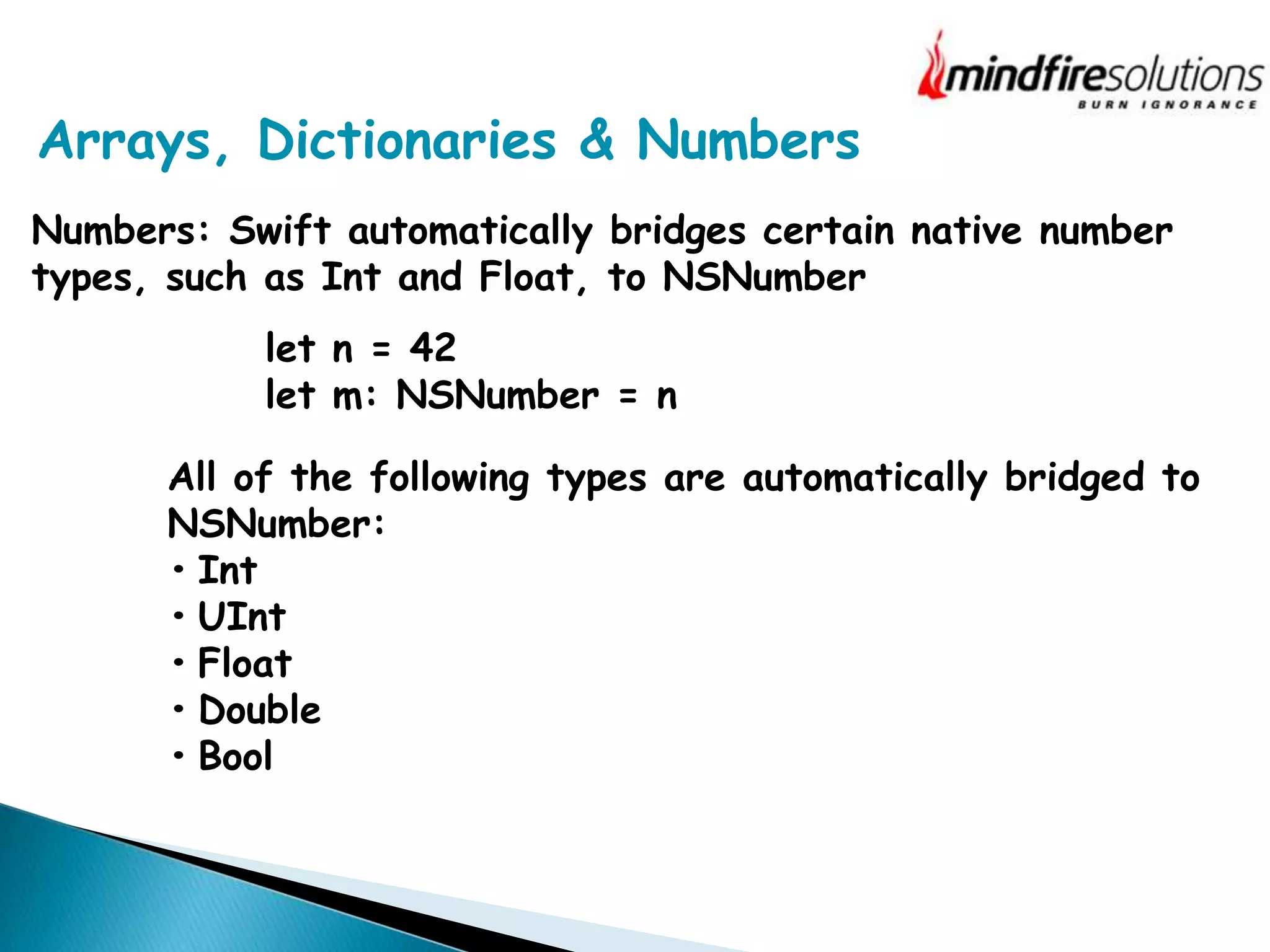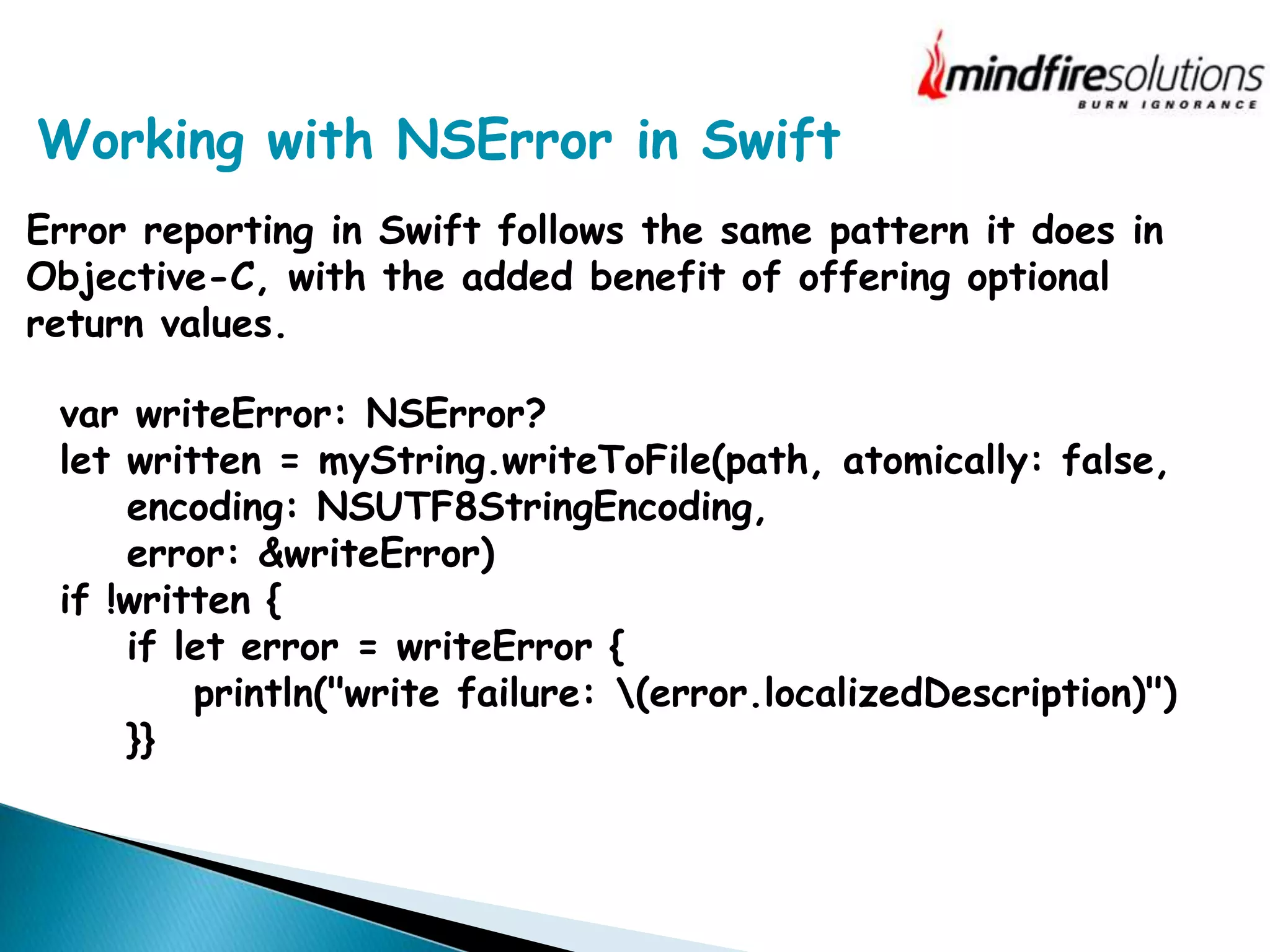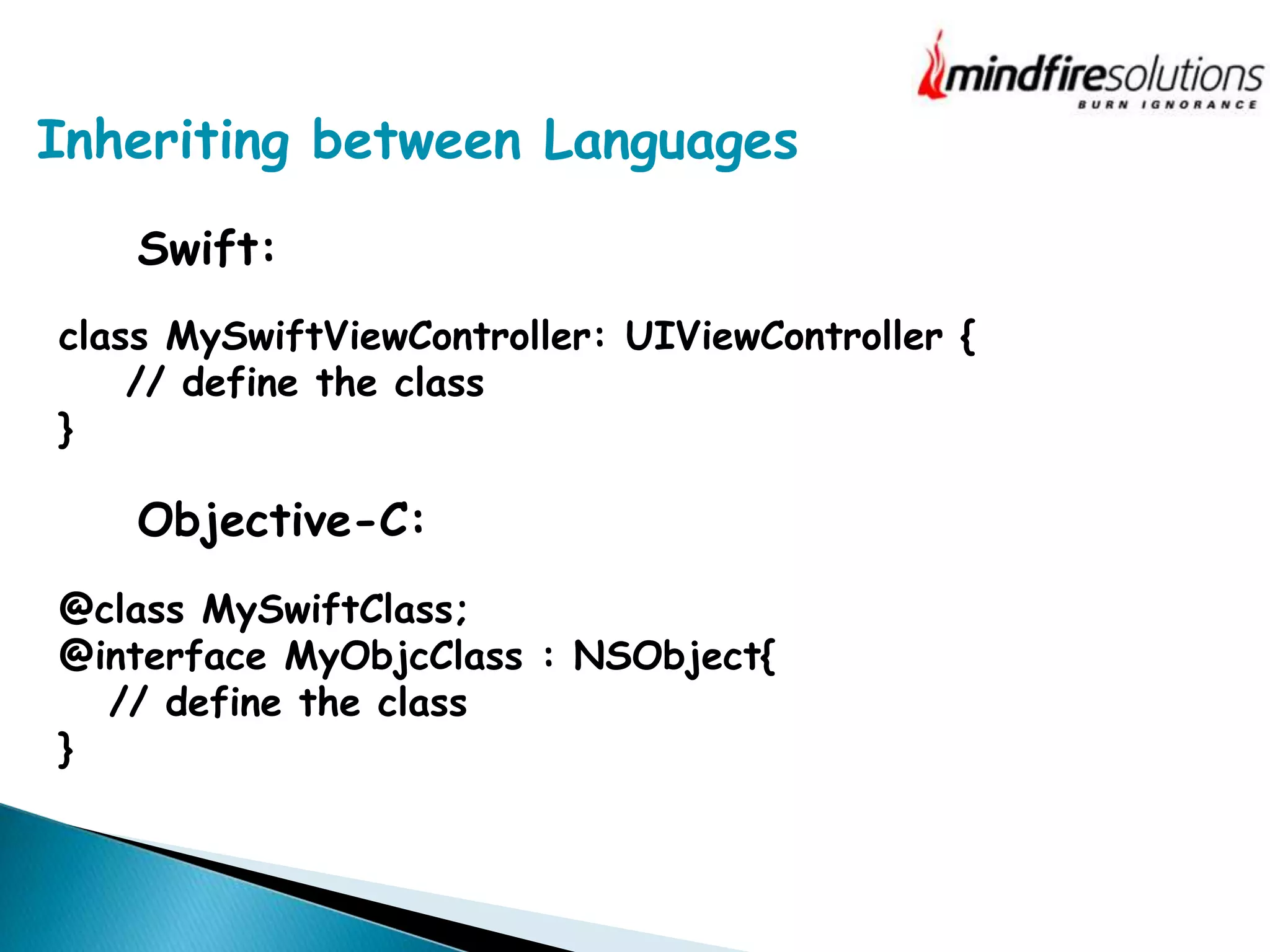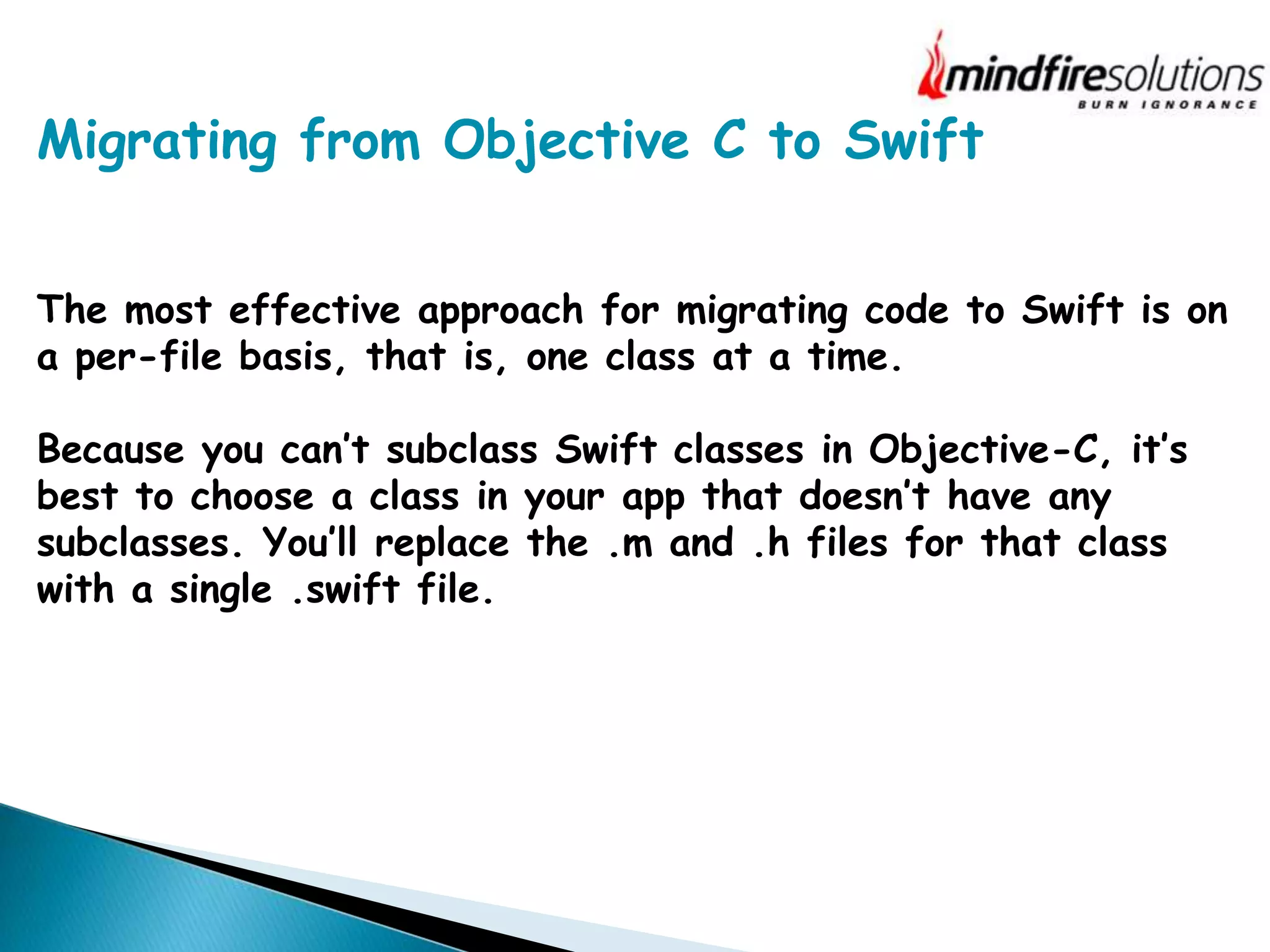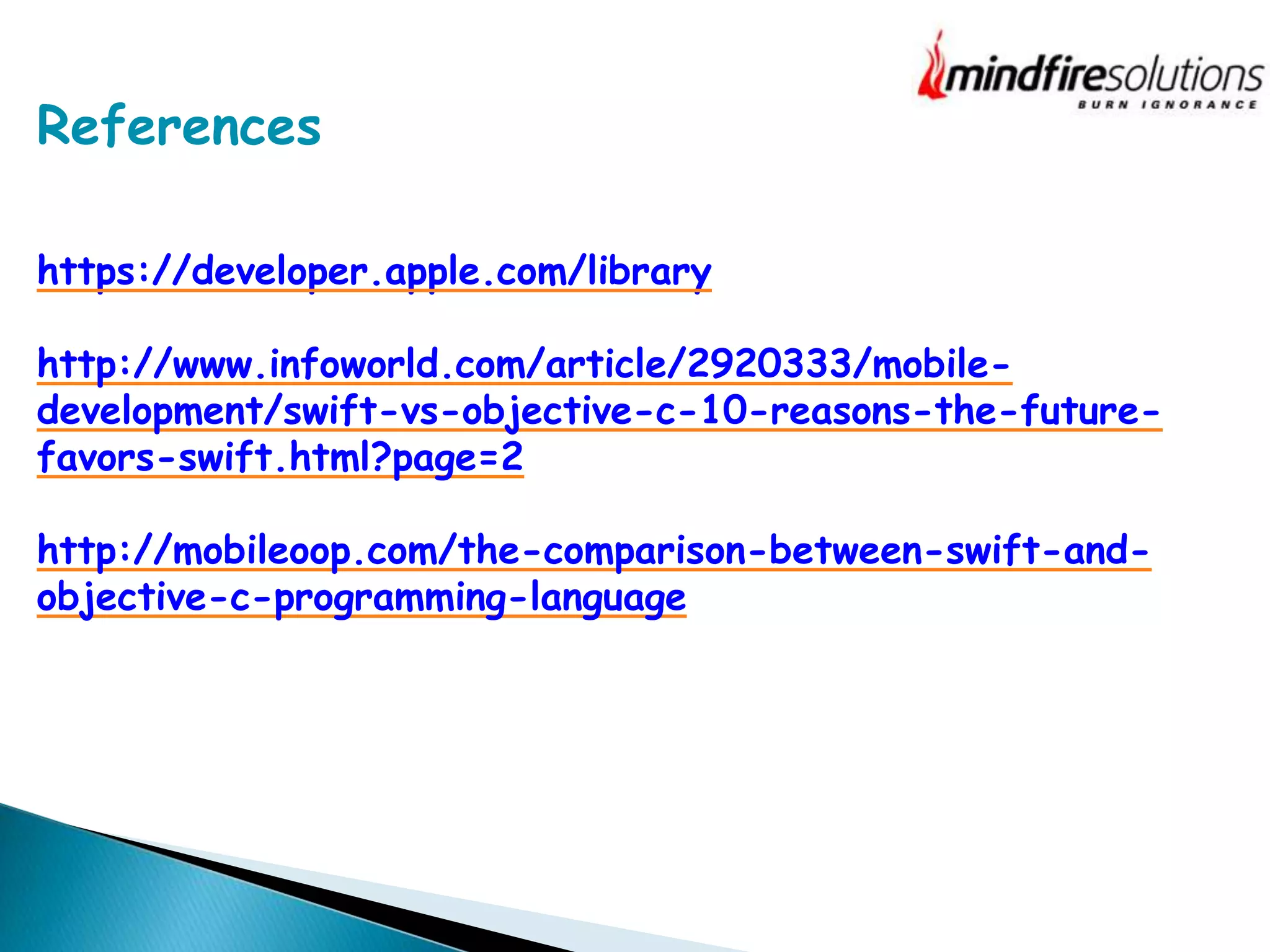The seminar presented by Neha Sinha from Mindfire Solutions discusses the interoperability between Swift and Objective-C, comparing their syntax, data types, and project integration. It highlights Swift's advantages over Objective-C, such as safer and faster code, advanced features, and better understanding of Objective-C. The presentation also covers practical aspects of mixing both languages in projects, migrating from Objective-C to Swift, and uses of bridging headers.
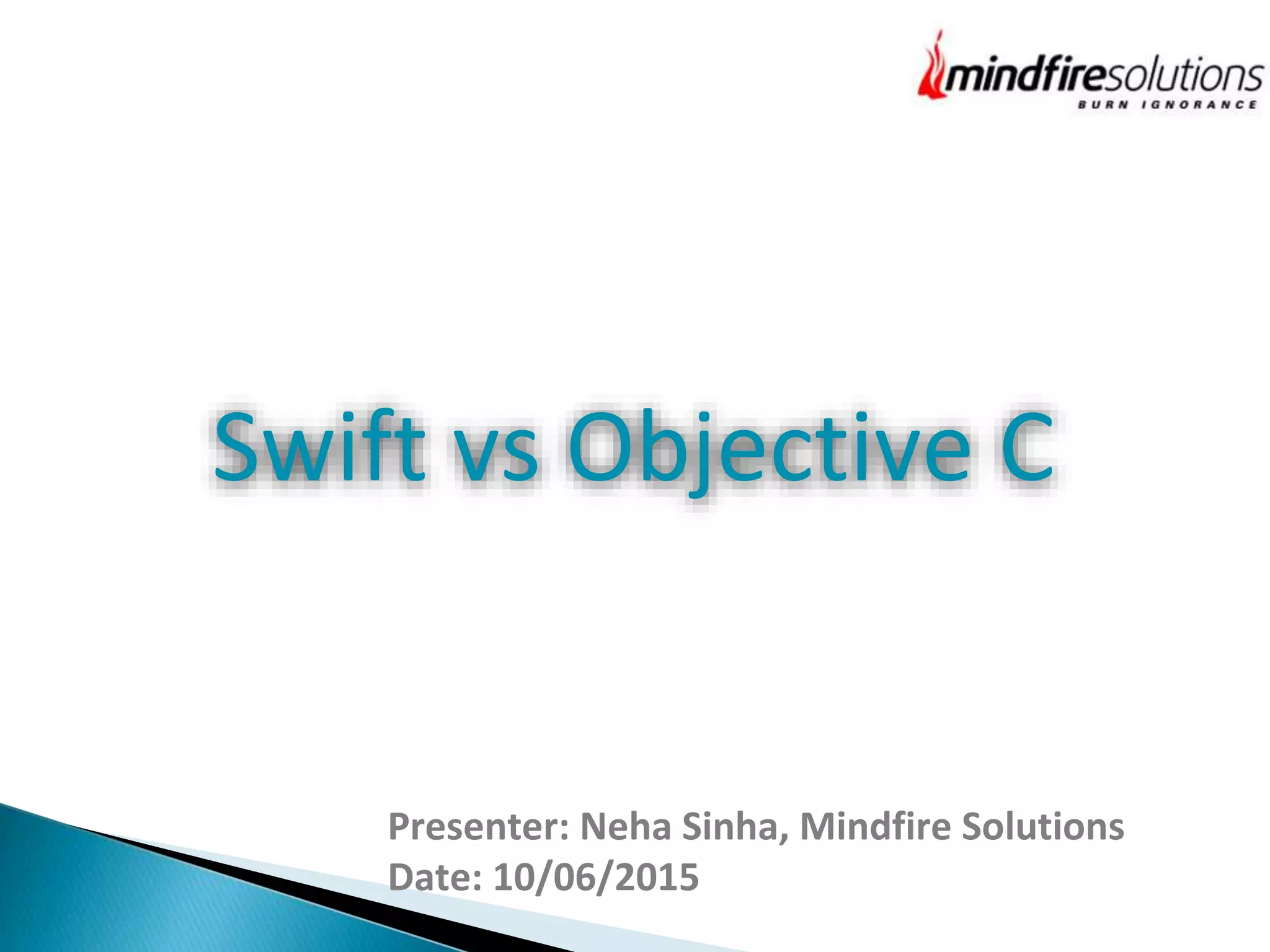
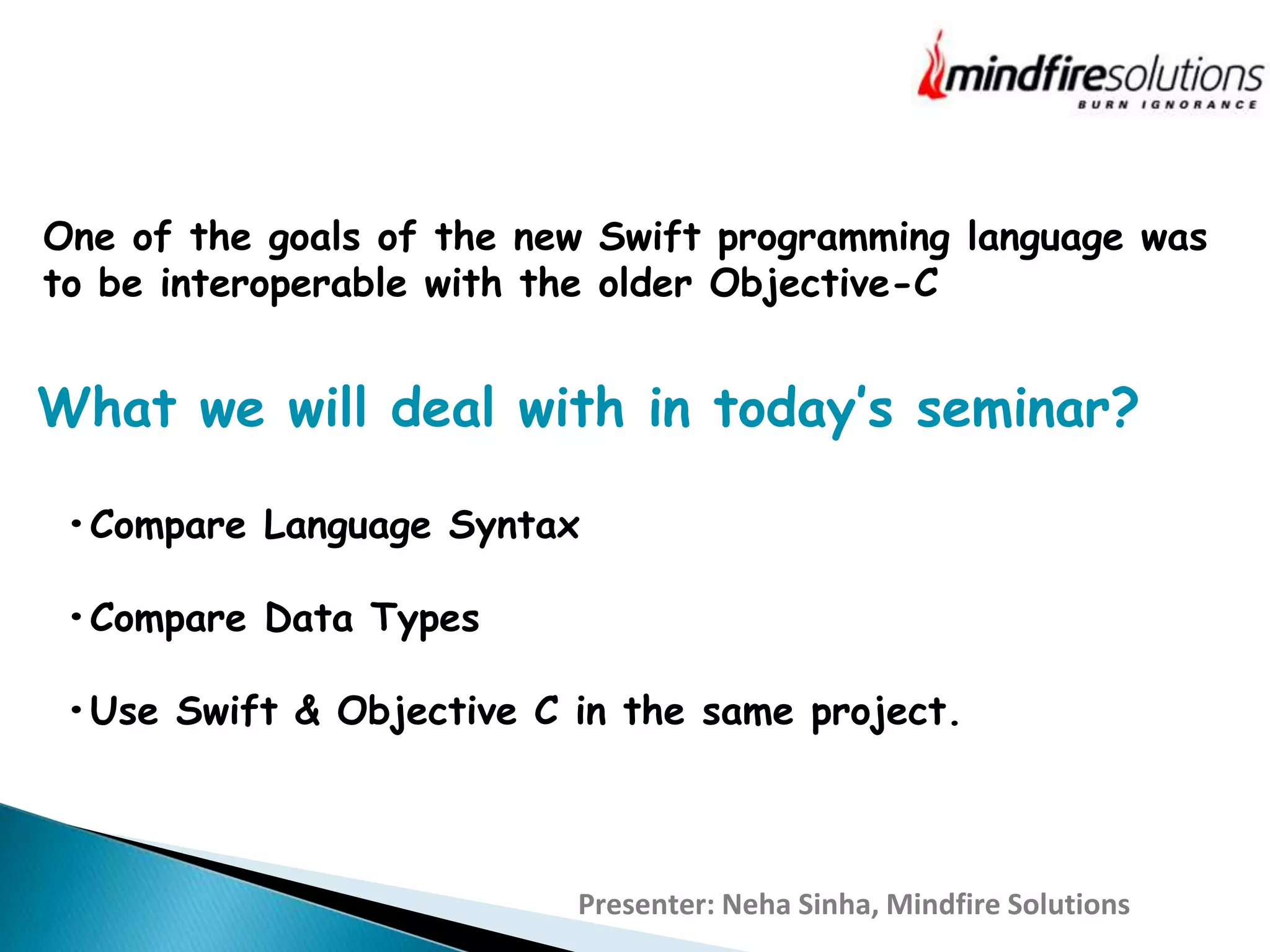
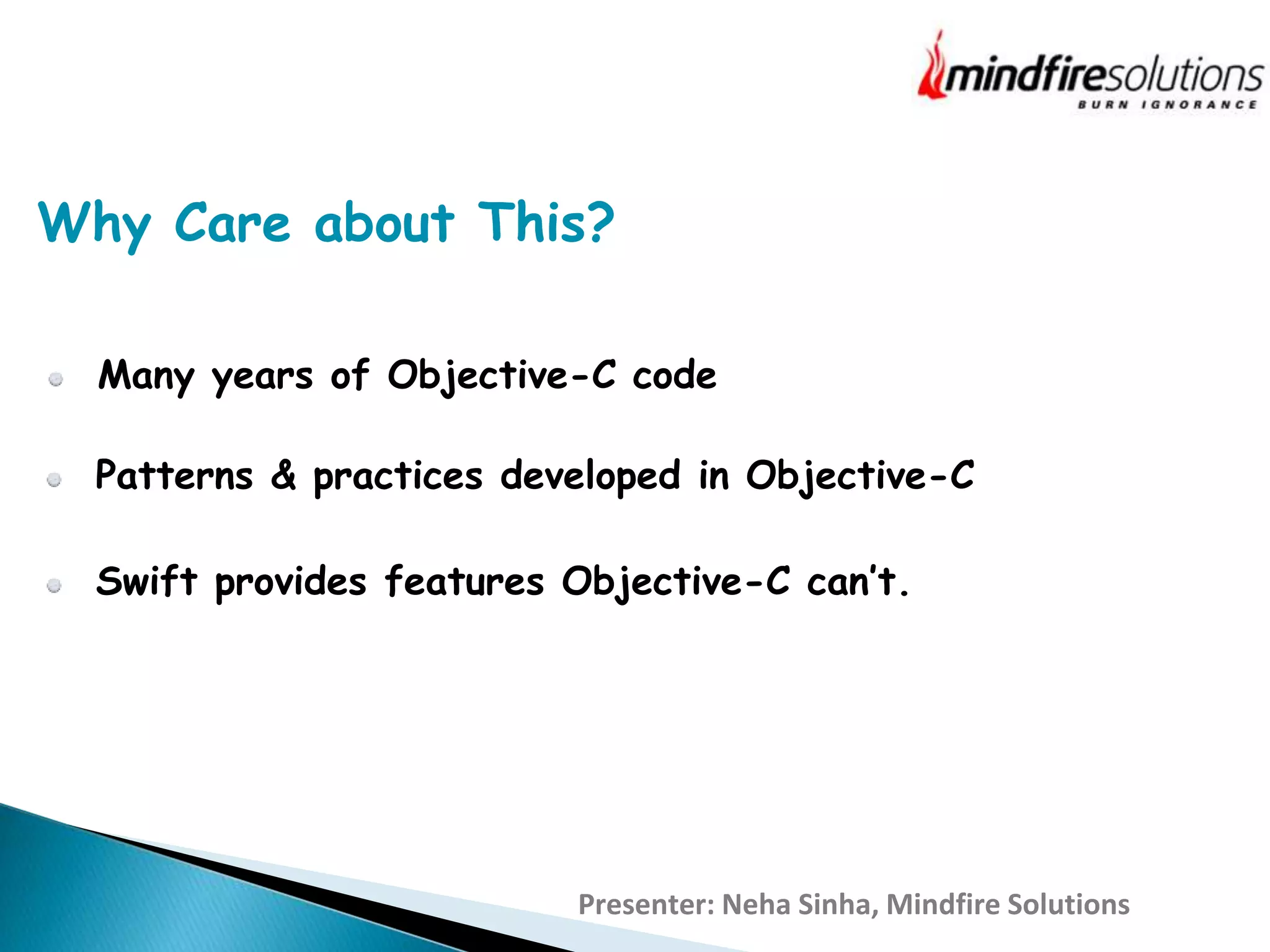
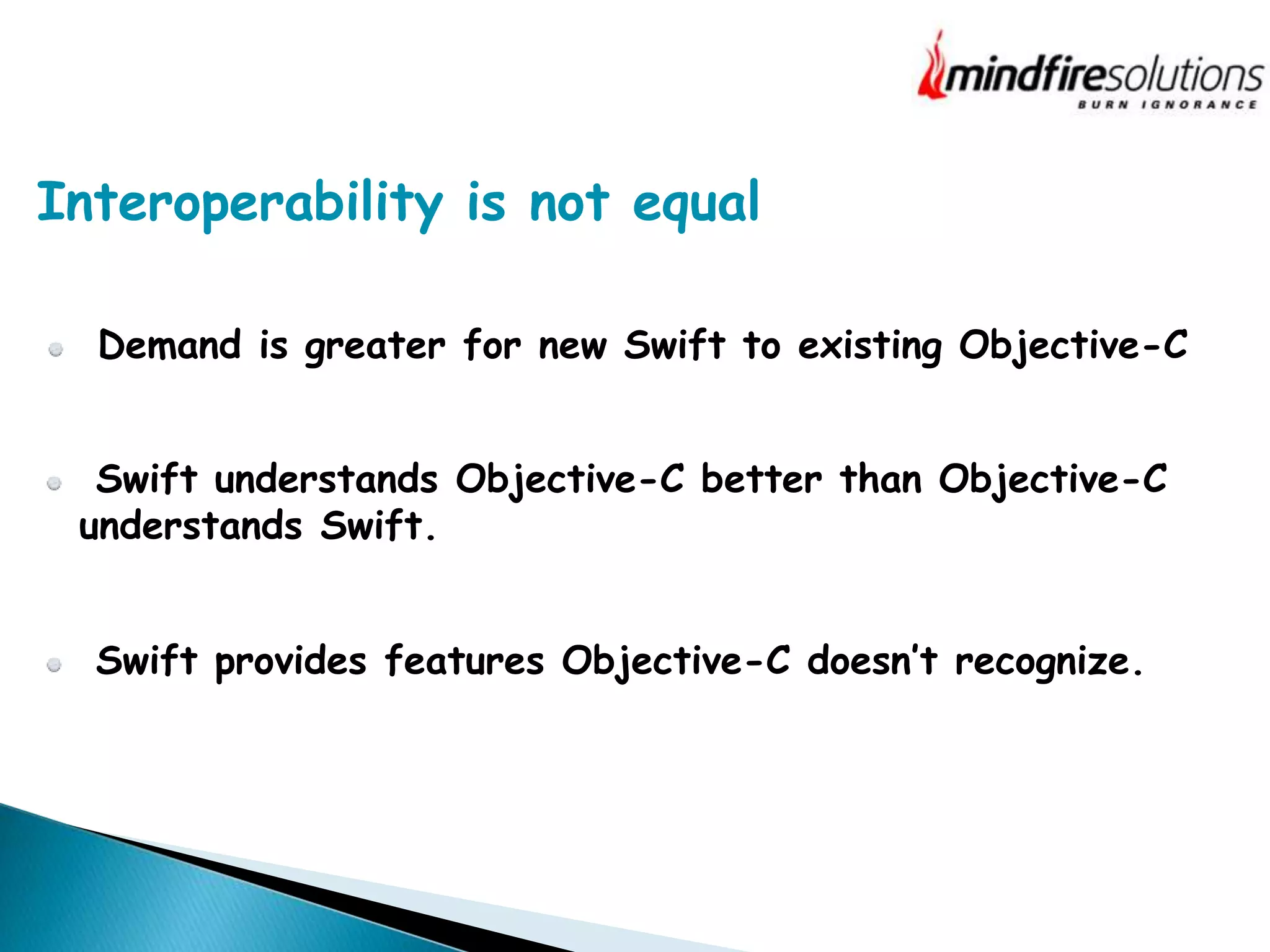
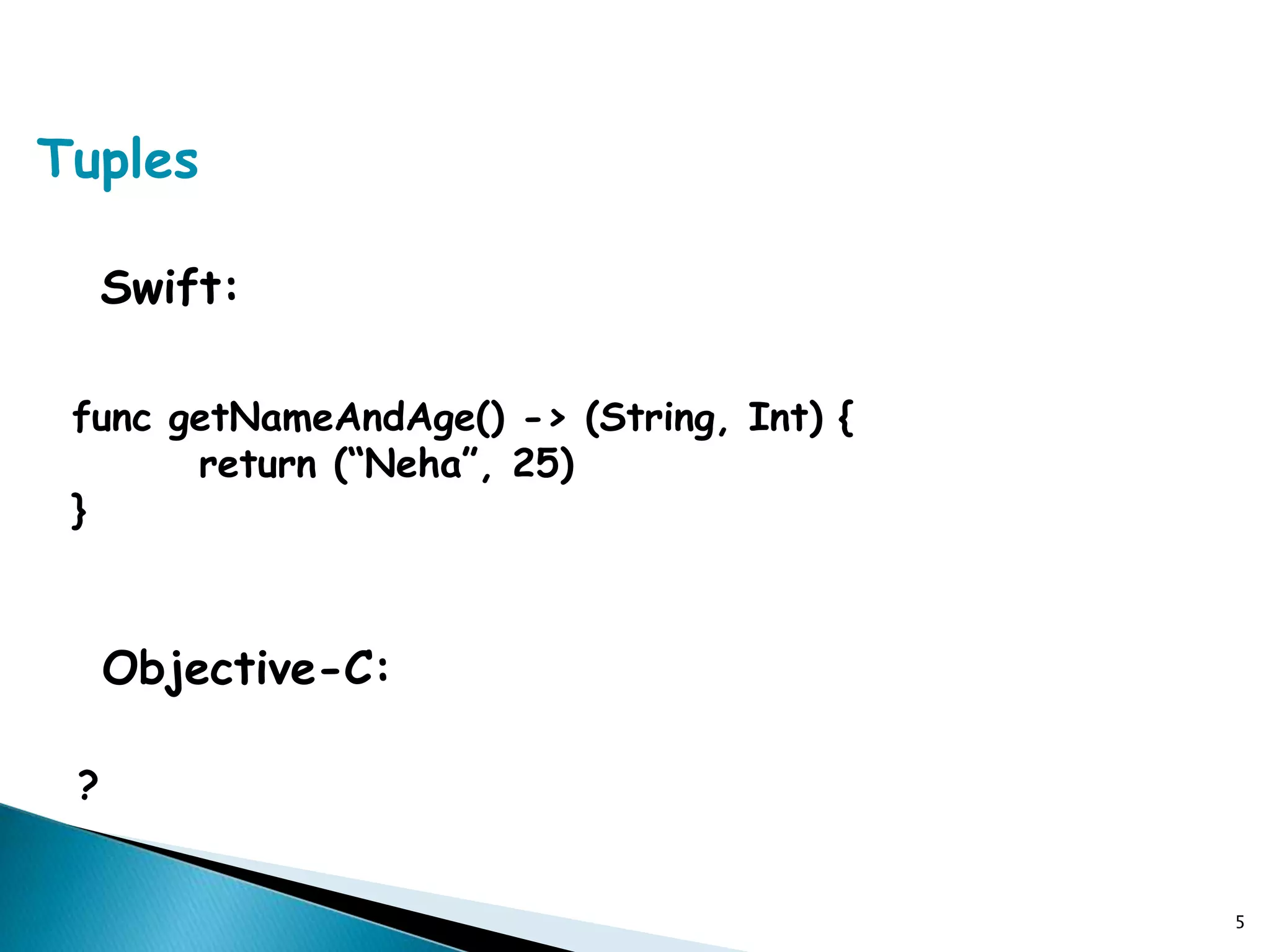
![Instantiating Objects Swift: var myDate = NSDate() Objective-C: NSDate* myDate = [NSDate alloc] init];](https://image.slidesharecdn.com/swiftvsobjective-c-150615072827-lva1-app6892/75/Swift-vs-Objective-C-6-2048.jpg)
![Using Initializers Swift: let myTableView: UITableView = UITableView(frame: CGRectZero, style: Grouped) Objective-C: UITableView* myTableView = [[UITableView alloc] initWithFrame:CGRectZero style:UITableViewStyleGrouped];](https://image.slidesharecdn.com/swiftvsobjective-c-150615072827-lva1-app6892/75/Swift-vs-Objective-C-7-2048.jpg)
![Mapping Factory Methods Swift: let color = UIColor(red: 0.5, green: 0.0, blue: 0.5, alpha: 1.0) Objective-C: UIColor* color = [UIColor colorWithRed:0.5 green:0.0 blue:0.5 alpha:1.0]; Factory methods & Objective-C classes are typically just mapped to their equivalent normal Swift initializers.](https://image.slidesharecdn.com/swiftvsobjective-c-150615072827-lva1-app6892/75/Swift-vs-Objective-C-8-2048.jpg)
![Failable Initialization Objective-C: UIImage* myImage = [UIImage imageWithContentsOfFile:@“”]; An Objective-C initializer can return ‘nil’. Swift demands that variables & constants always exist in a valid state.](https://image.slidesharecdn.com/swiftvsobjective-c-150615072827-lva1-app6892/75/Swift-vs-Objective-C-9-2048.jpg)

![Calling Methods Swift: myTbView.layoutIfNeeded() myTbView.insertSubView(mySubView, atIndex:2) Objective-C: [myTbView layoutIfNeeded]; [myTbView insertSubView:mySubView atIndex:0];](https://image.slidesharecdn.com/swiftvsobjective-c-150615072827-lva1-app6892/75/Swift-vs-Objective-C-11-2048.jpg)


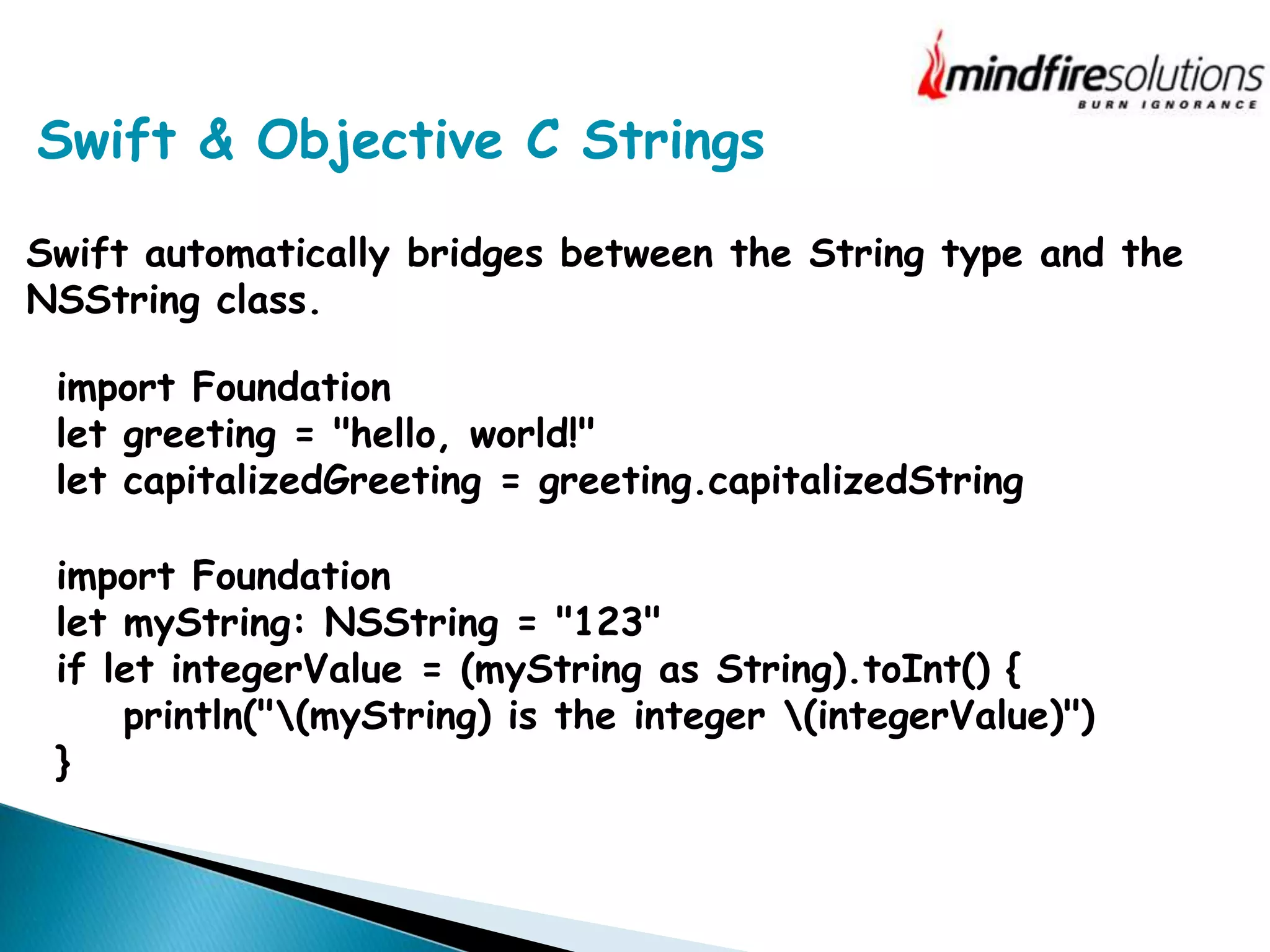
![Arrays, Dictionaries & Numbers Arrays: When you bridge from an NSArray object to a Swift array, the resulting array is of type [AnyObject]. let swiftArray = foundationArray as [AnyObject] if let downcastedSwiftArray = swiftArray as? [NSView] { // downcastedSwiftArray contains only NSView objects } for aView in foundationArray as! [NSView] { // aView is of type UIView } This cast is a forced cast, and results in a runtime error if the cast does not succeed.](https://image.slidesharecdn.com/swiftvsobjective-c-150615072827-lva1-app6892/75/Swift-vs-Objective-C-15-2048.jpg)
![Arrays, Dictionaries & Numbers Arrays: When you bridge from a Swift array to an NSArray object, the elements in the Swift array must be AnyObject compatible. let schoolSupplies: NSArray = ["Pencil", "Eraser", "Notebook"] // schoolSupplies is an NSArray object containing NSString objects](https://image.slidesharecdn.com/swiftvsobjective-c-150615072827-lva1-app6892/75/Swift-vs-Objective-C-16-2048.jpg)
![Arrays, Dictionaries & Numbers Dictionaries: When you bridge from an NSDictionary object to a Swift dictionary, the resulting dictionary is of type [NSObject: AnyObject]. The Swift compiler replaces the NSDictionary class with [NSObject: AnyObject] when it imports Objective-C APIs. When you cast in the reverse direction, from a Swift dictionary to an NSDictionary object —the keys and values must be instances of a class or bridgeable to an instance of a class.](https://image.slidesharecdn.com/swiftvsobjective-c-150615072827-lva1-app6892/75/Swift-vs-Objective-C-17-2048.jpg)
